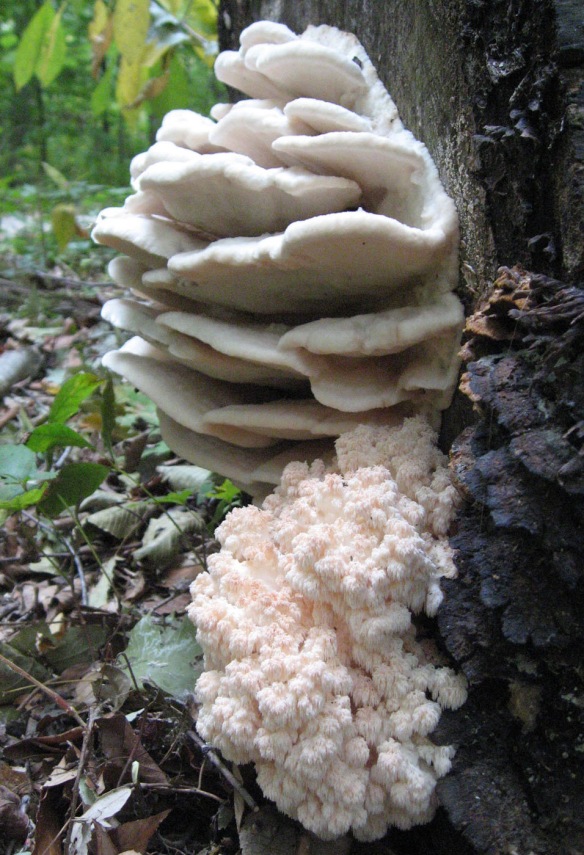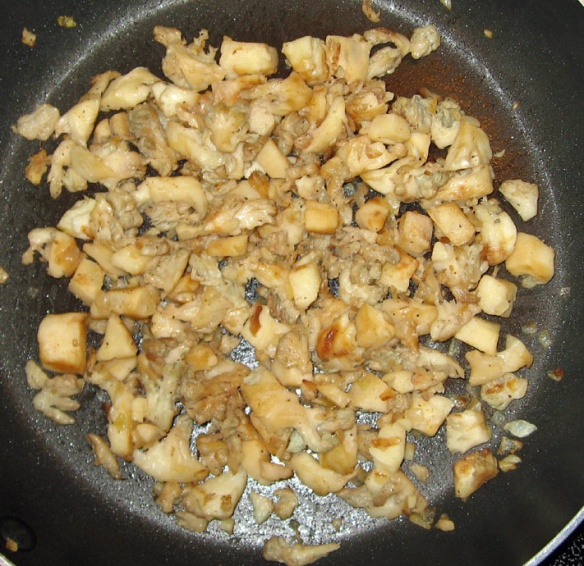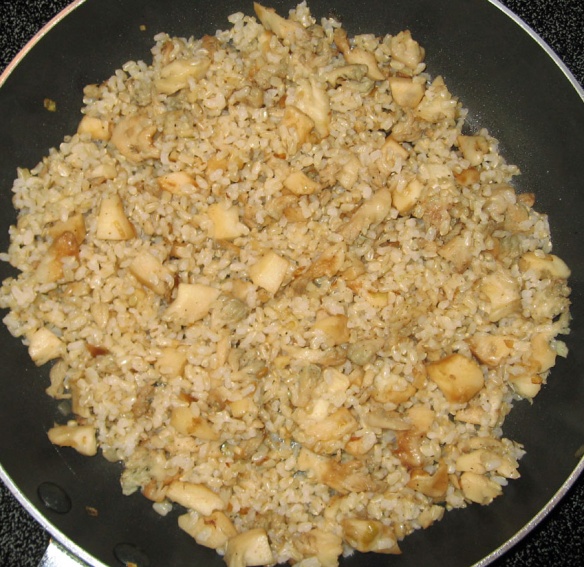On a recent visit to our local Heinen’s grocery store I noticed a profusion of choices in mushroom jerky. They had a brand featured on Shark Tank (Pan’s Mushroom Jerky), so I bought a package of their original recipe and passed it around at a mini-foray. It got favorable reviews, so I decided to try my hand at making my own. I know the carnivores in the group are saying really; why waste your time? This is a mushroom blog, after all, so why not? There are any number of websites with jerky marinades and recipes and they all share a common theme of including fat, acid, salt, heat and sugar. I picked this marinade mainly because I had the ingredients on hand and it’s a similar marinade to one I use for a salmon poke bowl recipe.
8 oz fresh mushrooms
1/4 cup low sodium soy sauce
2 teaspoons rice vinegar
1/2 tablespoon chili garlic paste
1 tablespoon sesame oil
1 tablespoon brown sugar
1/4 teaspoon smoke paprika
1/4 teaspoon freshly ground black pepper
1/4 teaspoon garlic powder
1/4 teaspoon onion powder

My local farmers market sells an Oyster mushroom medley (8 oz for $7), so I used them and tore them into pieces for the marinade. I initially tried slicing them, but it was less work to just tear them. I didn’t need to brush dirt off the mushrooms since they were already pristine from the grower. I kept the pieces fairly large as they will shrink somewhat after they are dehydrated. I soaked the mushrooms in the marinade overnight and almost all of it was absorbed into the mushrooms.


I spread the mushrooms evenly on a couple of dehydrator trays using parchment paper underneath and set the dryer for 140F. After 2 hours, I turned over each piece and waited another 2 hours. The result was semi-moist and chewy. You can go longer if you want a drier result, but this is a good starting point.


The jerky was very tasty and the texture was surprisingly good considering that a cooked oyster mushroom is slimy and flaccid. There was a nice balance of heat and sweet, but the marinade I chose was too salty and overpowering (there is a 1/4 cup of soy concentrated into a few ounces of dried mushrooms). This is similar to beef jerky products I’ve tried in the distant past and it would be fair to say (in this case) that the mushrooms were a convenient fiber delivery system for the marinade. I definitely want to try this again, but I will try marinades that showcase more of the umami flavor of the mushroom itself rather than rely on the marinade to carry the flavor.
Have you have ever made mushroom jerky? Feel free to share your experiences and recipes with us. – Jerry





















